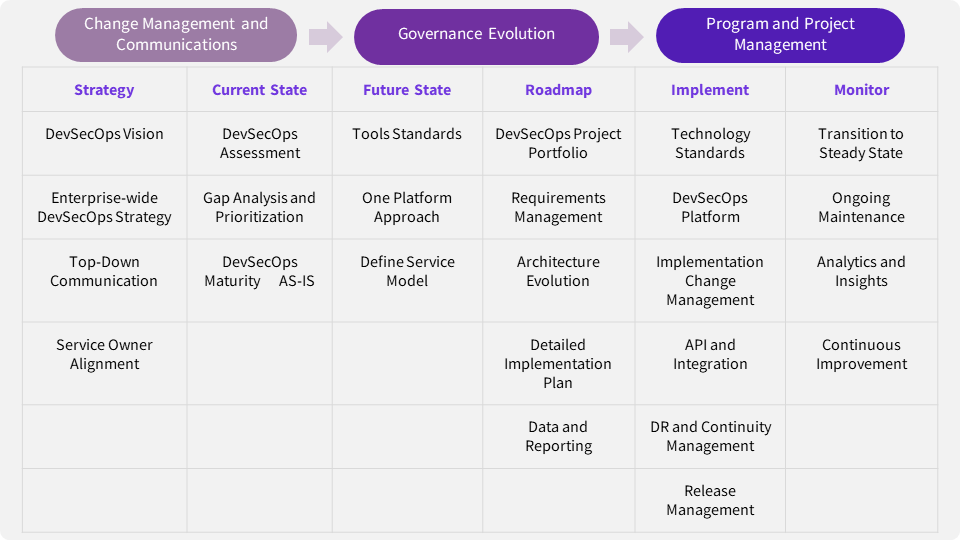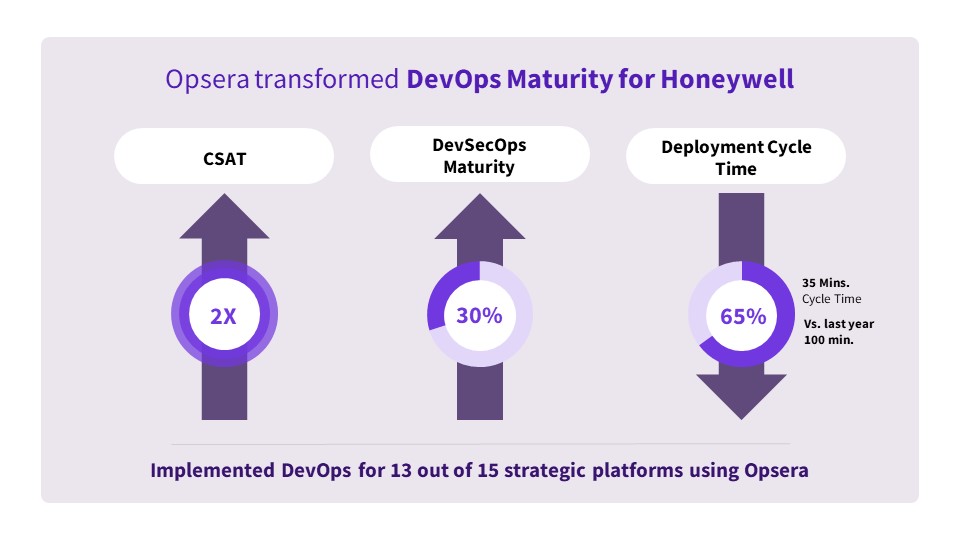DevOps undoubtedly helps enterprises accelerate their digital transformation journey and offer significant benefits including time to market, improving the agility and velocity, security and quality posture, and more importantly, developer productivity. However, it’s challenging to transform from a siloed approach of software development and operations to a seamlessly integrated DevOps methodology.
Honeywell decided to use Opsera’s no-code orchestration tool to make the transformation. Let’s take a look at how they did it.
Challenges of DevOps
To have an effective DevOps methodology, organizations must break down the silos that arose from the traditional application development methodologies and move to agile teams that create applications and microservices in sprints.
Another challenge that needs to be addressed is the explosion of tools and the lack of a cohesive set of tools that the entire team is knowledgeable about and uses. Developers need to focus on doing their job, and their DevOps functions, without having to worry about the complexities of maintaining, securing, patching, backing up, and the operational stability of individual tools.
Honeywell also had challenges integrating security into their DevOps practice. This is due to lack of integration and automation of security tools into CI/CD pipelines. DevOps skills were spread across multiple teams and it was very challenging for them to apply standards across multiple SDLC, SaaS and COTS applications.
The Honeywell Solution
Honeywell found using no-code DevOps orchestration enables the integration of tools in DevOps CI/CD toolchains via APIs. This resulted in their software teams delivering software faster, safer, and smarter.
They took a proactive approach to improve their deployment methodology by focusing on three key elements: change management and communications, governance evolution, and program/project management. They looked at the following elements in their process and strategy development; current state (what’s happening now); future state (how we’ll get there). The group also considered road maps for each stage including implementation plans as well monitoring metrics so they could see if everything is going according to plan.

“We came up with a vision and mission statement a year back. And as part of that, we said, the main intent is to reduce the cost of our products and solutions, increase the velocity, and reduce the time to market.” – Naresh Kedari, Senior Director IT, Technology & Connected Development at Honeywell
According to Naresh, Honeywell’s IT group has made a dramatic transformation from pre-DevSecOps to where they are today.
Before and After
- No standard process for DevSecOps –> Robust process and maturity model
- Tool sprawl with no defined standards –> One platform
- Manual effort, less automation –> 100% automation of CI & CD pipelines
- Low DevSecOps skills –> Trained 800+ team members
- Dev and Ops teams in silos –> Dev and Ops seamlessly integrated
In eight months, the company implemented DevOps for 13 of 15 strategic platforms.
As a result, customer satisfaction (Dev and Ops) improved by 2x DevSecOps maturity is up 30%. And, deployment cycle times are down 65% from 100 minutes to 35 minutes.

Benefits Realized by Honeywell
- Bringing one platform across enterprise IT has eliminated a lot of silo tools.Enabled them to rationalize the tools without taking the choice and flexibility from their development team.
- Established standard processes. Went from having multiple standards to a standard process framework and maturity model.
- The no-code platform helps teams automate DevOps processes, without any manual intervention. Achieving 100% automation across CI/CD pipelines.
- Trained 800 people across enterprise IT.
- Dev and Ops teams are seamlessly integrated as project teams. This brought a lot of collaboration and coordination between Dev and Ops and visibility across the lifecycle.
- Implemented 13 platforms within six months.
- Reduced deployment cycle time by an average level of 65%.
- Using the “shift left” approach whereby quality teams are part of every sprint we went through. Also automated a lot of quality aspects in terms of code check-ins.
- Established a comprehensive DevSecOps maturity model improving all aspects of maturity by 30% versus the previous year.
- Satisfaction improved as stakeholders felt manual intervention was reduced and they were able to automate faster.
Naresh concluded with this, “So this is where we are. It’s been a good journey over the last year. Of course, there is a lot to do to make sure we implement DevSecOps across enterprise IT overall. We are still marching towards that end.”
If you’re interested in automating your DevOps pipeline, check out our online demo or we’ll be happy to customize a demo for your needs.




